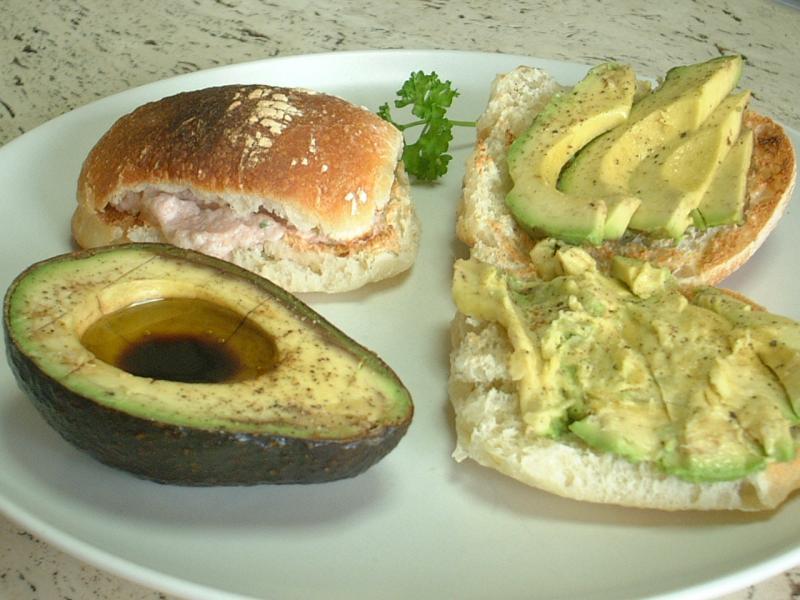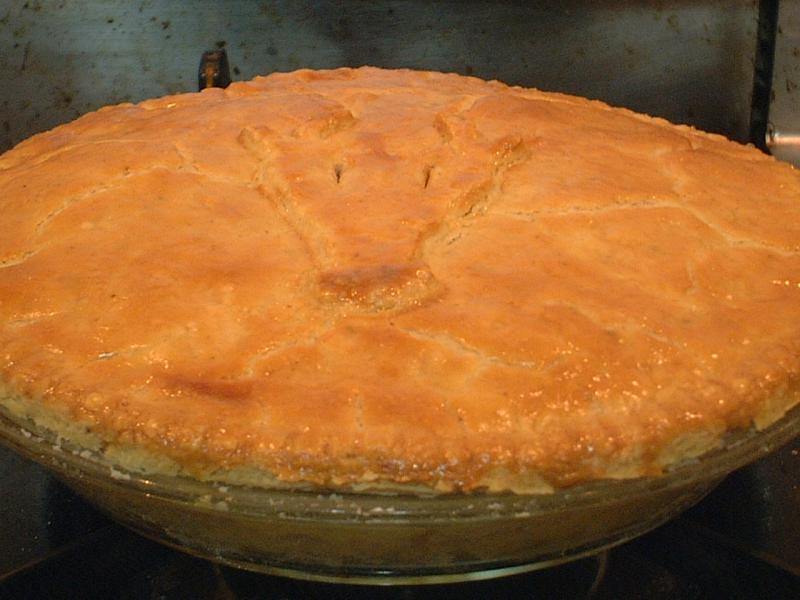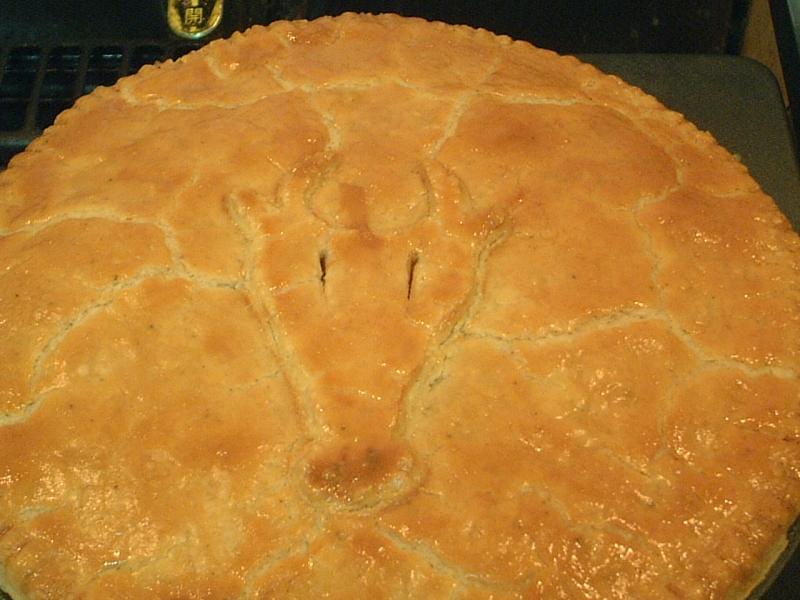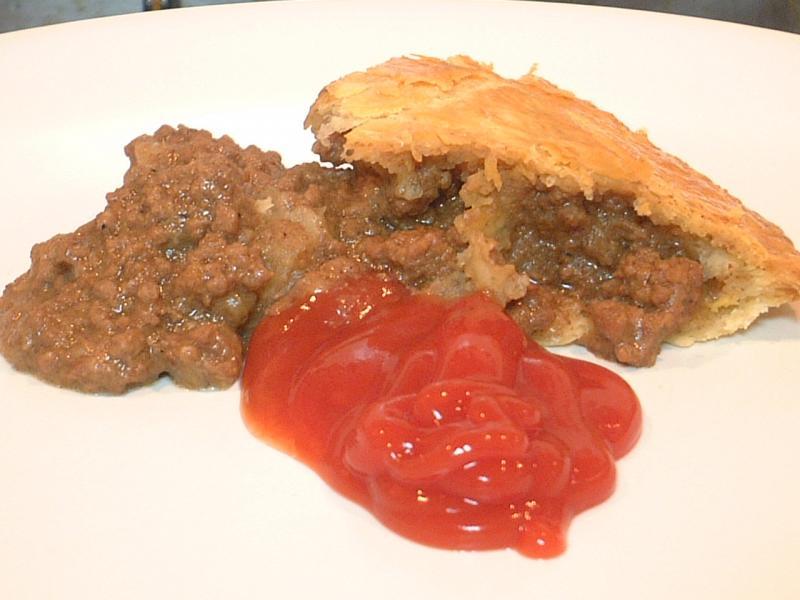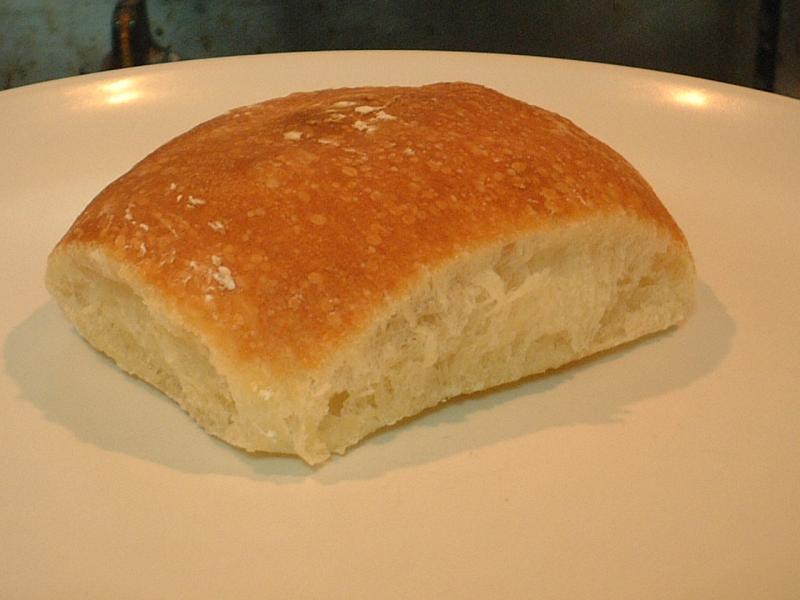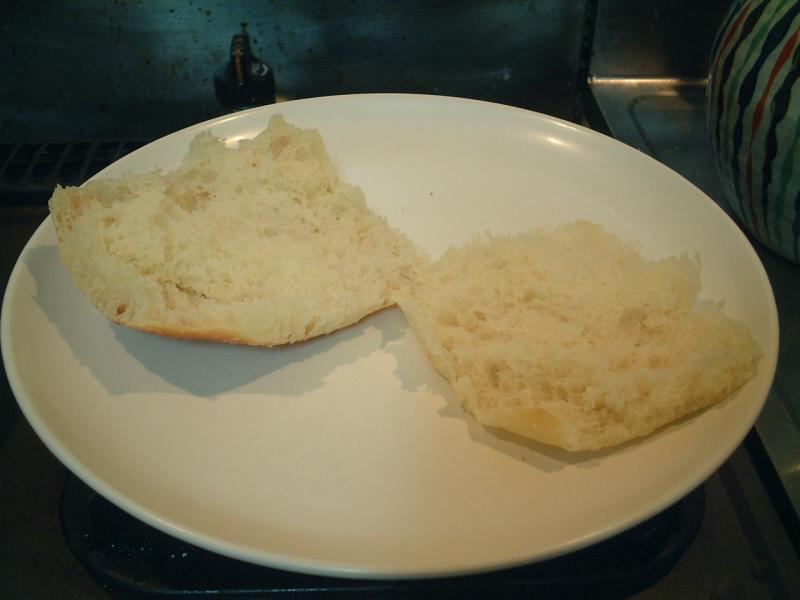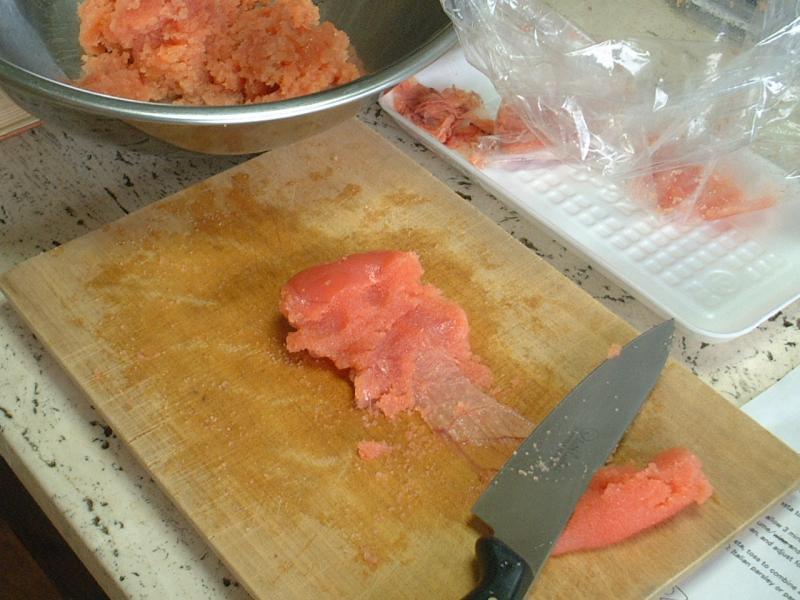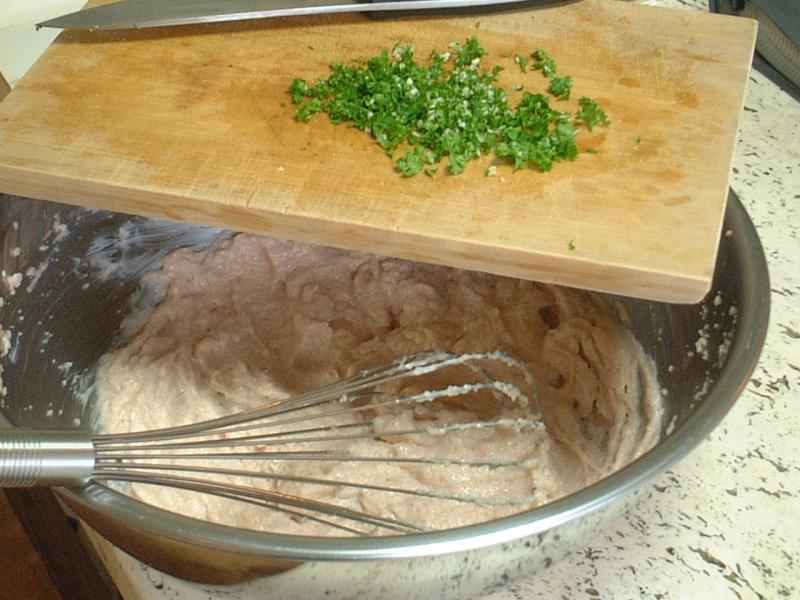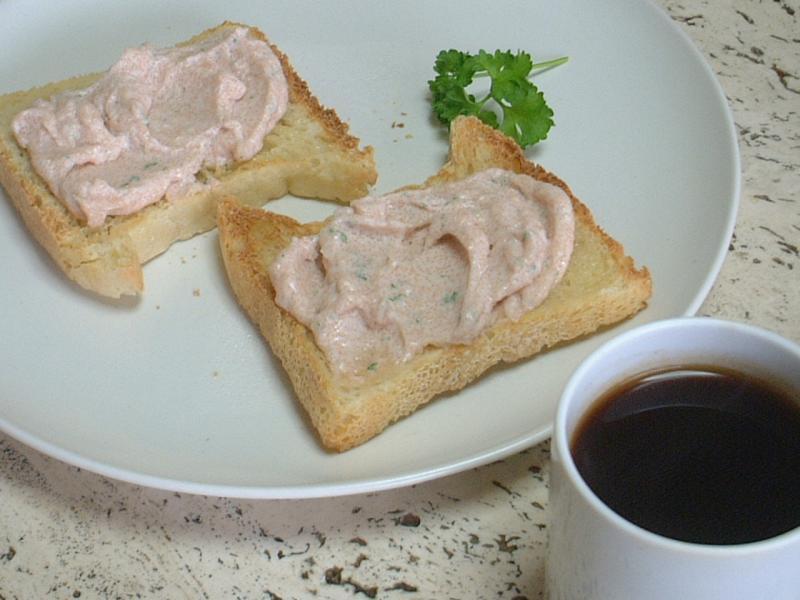-
Posts
1,728 -
Joined
-
Last visited
Content Type
Profiles
Forums
Store
Help Articles
Everything posted by Blether
-
Shred the meat in a cup blender and make a shepherd's pie. Moisten the meat with a small stock from the bones, add a veggie layer (tomato sauce ? peas & corn ? Baked Beans from a tin ?), top with mashed potato, and bake. I always love the shepherd's pie that comes after a roast leg.
-
St George "... is the patron saint of Aragon, Catalonia, England, Ethiopia, Georgia, Greece, Lithuania, Palestine, Portugal, and Russia, as well as the cities of Amersfoort, Beirut, Fakiha, Bteghrine, Cáceres (Spain), Ferrara, Freiburg, Genoa, Ljubljana, Gozo, Milan, Pomorie, Preston, Qormi, Lod, Barcelona and Moscow", it says here, and his father was Turkish and his mother Palestinian. There have to be some good fusion opportunities there. As an English festival, though, how could you argue with a roast beef dinner ?
-
How much table-top cooking is part of your regular eating ? It would never be more than a partial or occasional solution, but every time you explore the delights of fondue, raclette, shabu-shabu, sukiyaki, yosenabe, kimchinabe and the rest is a chance to minimise time spent alone in the kitchen / maximise social time.
-
What's your budget for sharpening materials ? It's easy to buy a reasonably-priced knife, or to buy an expensive knife, but if you don't maintain it, it becomes a a disposable item.
-
That guy's had some practice - is it significant that it's pink fish and Pink Floyd ? What intrigues me about knife design is the how and the why. I look at the shape of the blade on a 'boning knife', or a 'butcher knife' or a 'carving knife' or 'filleting knife', and I look at the thickness of the blade along the spine and through the blade, and at how flexible the blade is. I can guess, but no one's saying "this is designed this way because xxx". The marketing bumff all seems to be written by (for ?) know-nothings. I have some faith in the designer of my own knives, but it would be nice to know some of the thought behind the designs. I like my flexible fish filleting knife because (1) it's good for getting the blade down under a fillet for skinning it, (2) I guess it's easier to bring a flexible blade back on line if the blade starts to wander during a cut, and (3) it's sharp as get out. I have a 'boning knife' too. It's much stiffer than the filleting knife, with a thicker blade, a less aggressive cutting angle and a rougher finish on the cutting edge. When it comes to the butcher knife, that's a very distinctive shape, but why is it that way ? For breaking down carcasses is my guess - where you need to reach in deep and be able to make a slicing cut with the tip of the knife. But what am I missing ?
-
Yes, that gravy looks great - just the way i like it. The crackling looks good, too - how did you go about it ?
-
Drool... yes, those are up to your usual standard, though the 'strong, silent' first post was an interesting departure I have a prosaic question - what's the make/model of your saute pan ? And two more relevant ones, what's your approach to the tomato pizza sauce, and what baking temperature & time did you use ? I give my very-sparsely-topped ones somewhere around 8 minutes at 250C in an otherwise ordinary electric oven.
-
Gorgeous ! Grilled ?
-
Mmm, sunshine. Opened and toasted-face morning rolls (per The Bread Topic) with more ersatzamalata, and the other half of the avocado serving as its own balsamic-and-EVOO bowl. The fruit's too proud to hide its bruises, and the black specs are pepper:
-
Another post post-edit-deadline to remember that I also put about half a cup / 240ml of good chicken stock, that I'd frozen in cubes, in the mince.
-
It's supposed to be a cow - ended up more like a gazelle or something - I kind of feel I almost recognise it (suggestions welcome !). No, not a mold. I just free-cut it with the tip of a sharp knife - once over gently to draw the shape, once more deliberately chiselling the angles and making the cuts. crowdingthepan and Pam, it went like this: Mince It's one version of the mince that goes with mashed spud as "mince n' tatties". I made this one very simple. 1kg good minced beef a couple of good-sized onions, chopped About 2oz butter & a little oil as needed Breadcrumbs to thicken (in this case wholewheat, home-ground and stored frozen) Salt, pepper, Marmite - brown the mince in batches (I did it as four saute-pan-size hamburger-patty-like sheets, getting a good browning on each side, then de-glazing with water for each batch, reserving both meat and deglazings. Use a little lump of butter melted in the pan for each batch). - fry the onions over a high heat, with a splash of oil if necessary, stirring occasionally, till you get some browning and scorching on all pieces. - return the meat to the pan and add water to cover. - add breadcrumbs to thicken (I put in three fistfuls, aiming for extra thick since it's for a pie), adjust water as needed - season as desired (it tastes bready, but don't be scared, that cooks out) I want to use some Bovril or Oxo here (or yes, espagnole), but I've none. I used about a heaped teaspoon of Marmite for some depth and colour. Mashed anchovies would be an alternative, and Worcester Sauce / HP Sauce is a great flavour too, maybe with a bit of tomato paste. I used Worcester Sauce in my mince for so long and so persistently that I overdid it, and I've been on hiatus from that one for a couple of years. All the same, I'll still shoot you if you don't put the stuff in my Bloody Mary. - stew for 40 minutes or so. In the event I cooked this when the meat was freshly defrosted and it kept in the fridge for a few days. Pastry The bottom crust was hot water pastry, made with chicken fat leftover from stock-making. 8oz flour (half cake, half bread, a bit stronger than pastry flour so I don't have to knead it much), 100ml water, 75g chicken fat, salt & pepper). I had enough leftover to make a small raised pie with more of the mince. The top crust is all-butter shortcrust, with 1/4 bread flour, i.e. the same strength as AP Flour / Plain Flour. 5oz flour / about 3 of butter (unlike lard, butter has a proportion of water, so I err on the generous side), salt & pepper. The flour mixed but neither chilled nor sifted, the butter cold from the fridge, sliced off in thin slices over the digital scale till there was enough, cut in with two knives and finished off by hand till not really resembling fine breadcrumbs very much and not especially uniform, but no fat lumps bigger than a pea remain. Bound with water straight from the tap and fridge-rested for half an hour. Baking Fill, seal with beaten egg, decorate also using beaten egg. Refrigerate for half an hour for the seals to cure. Brush with egg wash and bake - I went this time with 210C for half an hour (the pie on the lower shelf, with the small hot-water-crust raised pie and a pasty from the shortcrust off-cuts on the top shelf), then as long as it took at 170C (an hour for the big pie). I really like the ketchup bottles we get nowadays, with the wide, flat flip-top the bottle can rest properly upside-down on I should note that minced-beef-pie is something of a Commonwealth staple. Aussies and Kiwis live on the things, and it was a childhood favourite of mine - the pastry with the meat filling, then the tangy ketchup. Mmm ! Beautiful chicken, crowdingthepan - impressively even browning from the skillet. DeliciouslyLekker, please tell what's in the pasta !
-
-
In Japan, you'd make yakisoba on it.
-

What makes the back half of a cow not kosher ?
Blether replied to a topic in Food Traditions & Culture
... and of course a haircut nowadays is something you get from your investment banker. I'm enjoying hearing about Jewish customs - a culture I've had minimum exposure to - but - has to be the mother of all post-facto rationalisations -
That really looks great, Ciao Ling. Here, more rolls. This time, ~11.8% Camelia brand flour instead of the previous (checked the bag) ~13.1% Canada 100. Initial oven temperature raised to 230C - this would have been right for the C100, but the Camelia proves keener to brown and the result is some burning on some of the rolls. Once again the roll in the centre of the batch comes out least browned, and it's the one pictured. Otherwise pretty much the same approach. The same rising time gave a more pronounced rise, but there was a commensurate reduction in oven spring (little or none) so that the result is rolls of the same size. The fridge-retard period was nearer a week than 5 days this time, but I'm relaxed about that - I'll can nail down the minor factors once the main ones are in line. How are they ? Disappointing, flavour-wise, hot from the oven. After a night in a plastic bag with its mouth open, actually quite good eating. The thick crust is nicely chewy without being soft, and carries a good browned-bread flavour. In Scotland I have eaten rolls exactly like these, and I'd put them in the top 10% of 'good rolls'; maybe the top half of 'good bakery rolls'. It isn't the ideal that I'm looking for, though. Camelia hasn't given as good a flavour in the crumb as the bread I was making before with Ebetsu Mills' Haruyutaka Blend at 11.0% or Minorinooka at 10.something. And I still have a bunch of flour to bake through before I'll be shopping again. A general question, for both bread and rolls, 'cos I'm baking bread regularly with these flours, too. What's with the cookery writers that claim 'higher gluten gives a higher rise' ? Up to a point I've found that's true, but the 13.1% stuff just doesn't rise higher than the 11 or the 10.something. It simply doesn't. In fact not as high, so far, even pushing hydration to the limit (I have a couple more things to try). Am I jumping to an early conclusion, or are the books too sweeping ?
-

What makes the back half of a cow not kosher ?
Blether replied to a topic in Food Traditions & Culture
While we wait for the knowledgeable... I have a feeling that some of the dietary prohibitions come out of superstitious Bronze Age peoples' reactions to cross-species disease incubation. We know more in our times about the mechanisms that allow new diseases to evolve or emerge - like Avian Flu; Swine Flu; AIDS from hunters eating chimp/monkey; BSE from cattle fed Scrapie-exposed sheep remains. I made this suggestion last year in conversation and my friend challenged the idea. He reckoned that the pork thing was simply because desert peoples don't want pigs wallowing in their limited water supplies: but that misses the fact that desertification in the Sahara region took place in two phases, around 1500BC and before that, around (IIRC) 2500 or 2000BC. Isn't a surgeon just a butcher who's good at exams ? (boom, tss) -
Smoked, no, unfortunately. Made up like this, it's garlicky, savoury sea-born goodness, of course, but even as supplied, it was hard to resist just spreading some on toast. Smoking food isn't something that's popular here, somehow. I really should take a leaf out of your book and do some pan smoking, particularly for seafood. In fact I have a pretty big box smoker on the balcony. Having produced some successful stuff - like sides of hot-smoked salmon - I decided in the end that it wasn't considerate enough of the neighbours, what with long smoking times and people hanging out washing.
-
You beat me to that observation. If you brown by the look & feel of what's happening in the pan, you might not notice a difference between light and dark pans; if you do it by applying a set level of heat on the stove controls, you might find you need just a (little !) bit more with a lighter-coloured pan. I'd say that browning effectiveness is determined by the level (rate might be a better word) of heat arriving at the food. You can achieve the same rate of browning with a conductive pan that transfers heat efficiently from the flame. On other points, I'll say first of all that I'm very happy that people use and enjoy Le Creuset's enamelled cast iron ware. I have a couple of pieces myself, but some years ago I re-appraised my thoughts about it. To me, it doesn't have any general functional advantage over other cookware for braising, and it does have some disadvantages. Of course, as shown by people regularly producing good braised dishes using it, it's obvious that the disadvantages aren't prohibitive. I would be disappointed to be standing around the kitchen waiting for a pot to heat up gently, if it had sold itself to me as the *best* for braising, or for anything else.
-
I guess uni envy will always be with us. Thanks for the tip Edit to add: another idea, in Tokyo at least, is to pick up fresh whole uni at Tsukiji. I did that once and took them to a party along with a fat kurodai, which I prepared meuniere style. Then a Chinese lady insisted on going home with the rest of my jar of painstakingly-rendered ghee
-
A visit to Misaki - a port at the mouth of Tokyo Bay, famous for its tuna boats and for a retail market where you can get the tuna, as well as other seafood, direct and cheap - produced a pound of lightly-salted cod's roe for 1,000yen / 10 bucks or so. I made half of it into cod-roe taramasalata , a generous application of which to toasted mutant experimetal breadmaker bread made breakfast
-
You know, an Akita bijin (a beauty from Akita) told me "you haven't tasted uni till you've had it at the beach, just scooped out of the freshly-dived shell". As you probably know, uni sold through the food distribution system is 'brined' in an alum solution to help the pieces retain shape and integrity, and I'm told it affects the flavour. So I have uni envy too. Maybe we all have uni envy, as Freud wouldn't have said over his gefilte fish. Thanks for saying so So much for the picture of garlic - the shiny blade caught me out on exposure. The knife has always appealed to my eye, that's for sure. And they work, too - for a moment there I thought I was in Goodfellas. I read recently that the maker, "Taylor's Eye Witness" missed the designer's input after his death. They've had a design consultancy in and have new ranges, some of which leave me wondering. At least they haven't yet reached the stage of giving up on the old designs.
-
It looks super-savoury. And Matthew Grant, your pork tenderloin looks impressive (the meat in particular, done just right, to my eyes). Is it a dish you've cooked before ? How do the garlic leaves, fennel and orange work with the meat ?
-
That's great. Thank-you. Over here I've been warily eyeing an Indian recipe that involves ground lamb in a pot, a well in the centre, a load of onion skins and a piece of burning charcoal and a lid. I'm waiting for one of my pieces of cookware to volunteer.
-
I missed out shungiku. Of course you're right, shungiku season is ending now, not beginning. I should know this, because shungiku became a favourite of mine through eating it in nabe and shabu-shabu, which are of course winter food, and it was nothing but sloppiness and careless romanticism. Those are certainly faults of mine, but if you don't like them... I have others.


